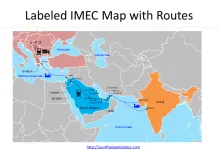SWOT analysis is a strategic planning tool that helps organizations identify their internal strengths and weaknesses and external opportunities and threats. The acronym stands for Strengths, Weaknesses, Opportunities, and Threats. It is a powerful tool that can be used to evaluate a company’s overall position in the market and make informed decisions about the future. The free SWOT analysis templates from the site can help to save your time and differentiate your slides from the competition.
SWOT analysis aims to provide a clear and comprehensive understanding of an organization’s current position and potential for growth. By identifying strengths, weaknesses, opportunities, and threats, a company can develop a strategic plan that capitalizes on its strengths and minimizes its weaknesses. This article will provide a detailed overview of SWOT analysis, including how to identify strengths, weaknesses, opportunities, and threats and how to conduct a SWOT analysis and use the results to make informed decisions.
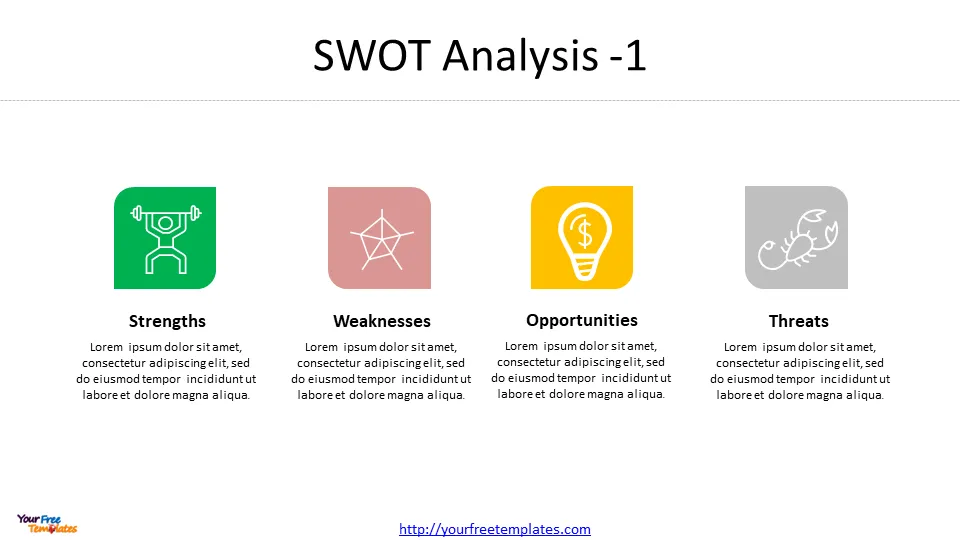
There are 9 original Free SWOT Analysis Templates designed by our team together with the Everything You Need To Know about SWOT analysis.
- Components of SWOT Analysis
- SWOT table
- How to conduct a SWOT Analysis
- Benefits of SWOT Analysis
- Tips for conducting an effective SWOT analysis
- Potential challenges when conducting a SWOT analysis
As the same diagram PowerPoint template series, you can also find our Data Mining, marketing segment, Porter’s five forces, SWOT Analysis, BCG Matrix, Artificial Intelligence, National Diamond and BlockChain PowerPoint templates.
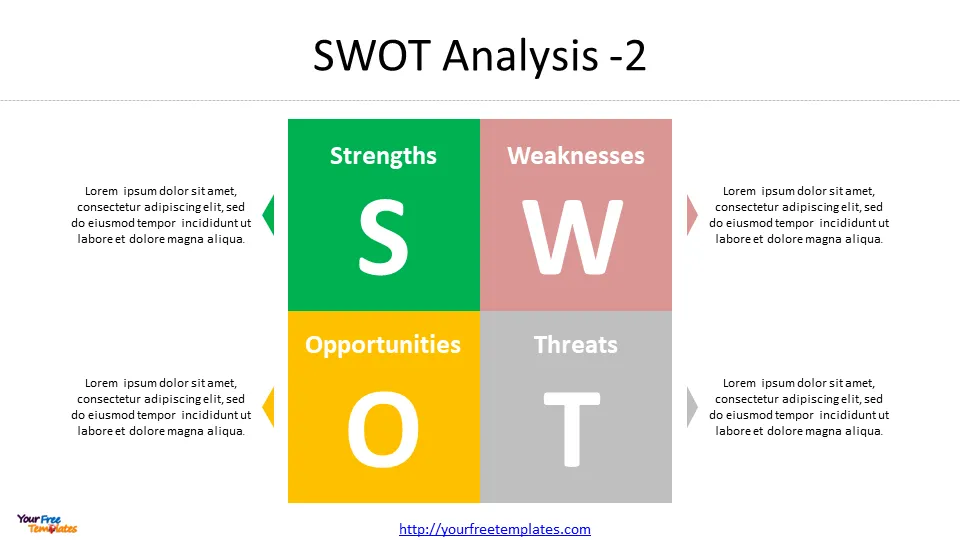
Components of SWOT Analysis (you can find them in our free SWOT analysis template)
Following are the four categories that are included in every SWOT analysis;
Strengths
Strengths are the positive aspects of an organization that give it an advantage over its competitors. These can include a strong brand, a loyal customer base, or a unique product or service. Companies should look at their internal resources and capabilities to identify strengths, such as their employees, technology, and equipment.
Examples of strengths include:
- A strong brand that is well-known and respected in the industry
- A loyal customer base that continues to purchase products or services
- A unique product or service that sets the company apart from its competitors
- Strong financial resources that allow the company to invest in growth and expansion
- A talented and experienced workforce that is dedicated to the company’s success
Weaknesses
Weaknesses are the negative aspects of an organization that can hinder its ability to compete. These include needing more resources, outdated technology, or poor management. To identify weaknesses, companies should look at their internal resources and capabilities and their external environment.
Examples of weaknesses include:
- Lack of financial resources that limit the company’s ability to invest in growth and expansion
- Outdated technology makes it difficult to compete with newer, more advanced companies
- Poor management practices that lead to low employee morale and high turnover
- Limited product or service offerings that make it difficult to attract and retain customers
- Lack of a strong brand or reputation in the industry
Opportunities
Opportunities are external factors that can help an organization grow and expand. These can include new market trends, technological changes, or consumer behaviour shifts. To identify opportunities, companies should look at the external environment and identify trends that could benefit the company.
Examples of opportunities include:
- The emergence of new technologies that could be used to improve products or services
- Changes in consumer behaviour that create a demand for new products or services
- The expansion of the company into new markets or regions
- The acquisition of a competitor that would strengthen the company’s position in the market
Threats
Threats are external factors that could harm an organization. These can include new competitors, regulation changes, or economic downturns. To identify threats, companies should look at the external environment and identify trends that could harm the company.
Examples of threats include:
- The emergence of new competitors could weaken the company’s position in the market
- Changes in regulations that could increase costs or limit the company’s ability to operate
- Economic downturns that could lead to decreased demand for the company’s products or services
- Natural disasters that could disrupt operations and damage the company’s facilities
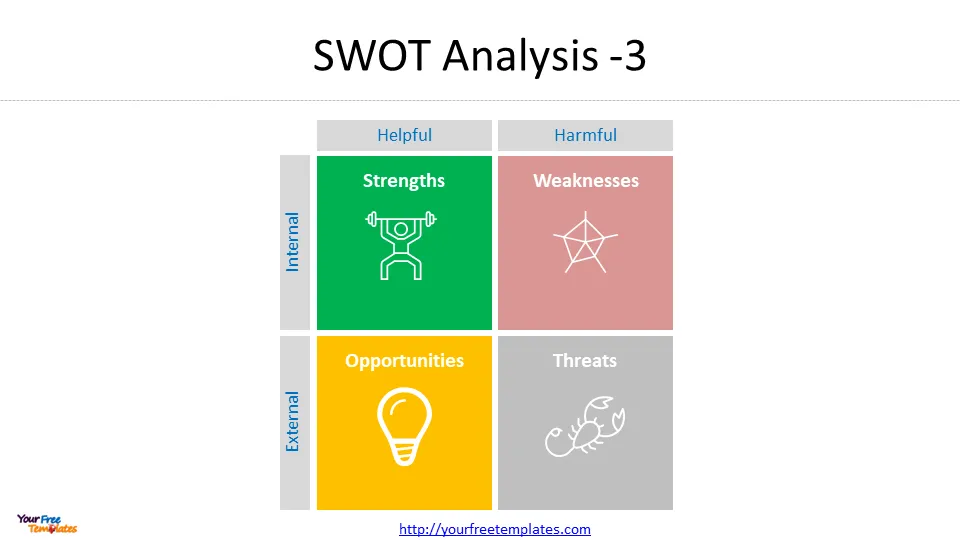
SWOT table (you can find the table in our free SWOT analysis template)
A SWOT table is a visual representation of the information gathered during a SWOT analysis. It is a tool that helps businesses organize and present information clearly and concisely. The table typically has four quadrants, one for each of the elements of the SWOT analysis: strengths, weaknesses, opportunities, and threats.
- The strengths quadrant lists the internal factors that give the business a competitive advantage. These could include a strong brand reputation, a skilled workforce, or proprietary technology. By identifying their strengths, businesses can focus on leveraging them to achieve their goals.
- The weaknesses quadrant lists the internal factors that impede the business’s performance. These could include things like a lack of resources, a lack of expertise, or a weak supply chain. Businesses can develop strategies to address their weaknesses and improve their overall performance by identifying them.
- The opportunities quadrant lists external factors the business can take advantage of to achieve its goals. These could include changes in technology, emerging markets, or shifts in consumer behaviour. By identifying opportunities, businesses can develop strategies to capitalize on them and achieve growth.
- The threats quadrant lists external factors that could negatively impact the business. These could include increased competition, economic downturns, or changes in government regulations. Businesses can develop strategies to mitigate threats and protect their interests by identifying them.
One of the main benefits of a SWOT table is that it helps to organize and present the information clearly and concisely. That makes it easier for managers to understand and decide based on the information. Additionally, the visual nature of the table makes it easy to share information with others in the organization, which can facilitate teamwork and communication.
Another benefit of a SWOT table is that it helps businesses to prioritize the information. By identifying the most important strengths, weaknesses, opportunities, and threats, businesses can focus on the areas that will impact their performance.
It is also important to note that the SWOT table is useful for businesses and individuals, who can use it to evaluate their personal and professional development. SWOT analysis is not a one-time exercise but rather a continuous process. Businesses should regularly review and update their SWOT table to ensure that it accurately reflects their current situation and to identify new opportunities and threats as they arise.
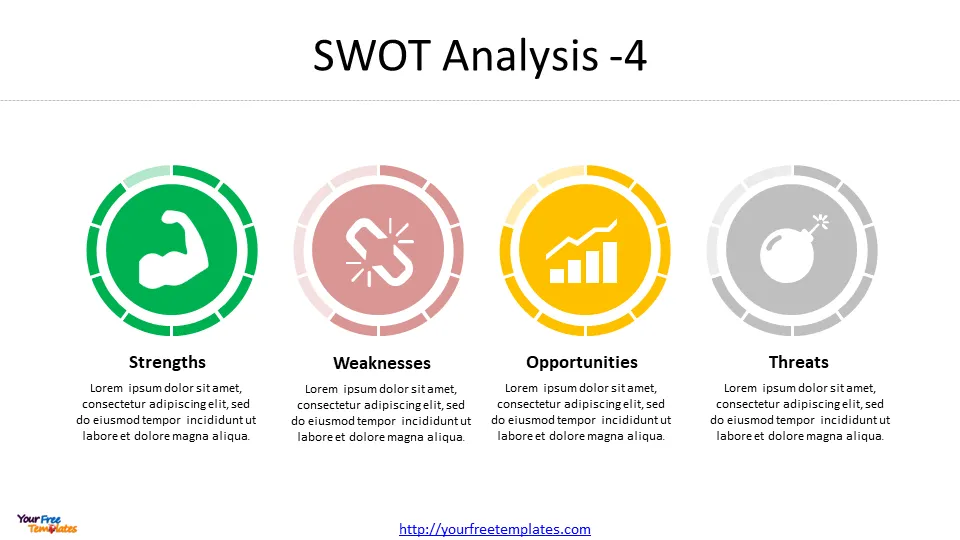
How to conduct a SWOT Analysis with our free SWOT analysis template
Conducting a SWOT analysis is a valuable tool for any organization looking to evaluate its position in the market and make informed decisions about the future. The process involves identifying the organization’s strengths, weaknesses, opportunities, and threats (SWOT) to develop a strategic plan that capitalizes on its strengths and minimizes its weaknesses. Here is a step-by-step guide on how to conduct a SWOT analysis.
Step 1: Determine Your Objective
Before beginning the SWOT analysis, it is important to define the purpose and objectives of the analysis. That will provide direction and focus for the analysis and ensure that the results are relevant and useful.
Step 2: Gather information
The second step in conducting a SWOT analysis is to gather information about the organization, including its internal resources and capabilities, as well as external factors such as market trends, competitors, and regulations. This information can be gathered through various methods, such as market research, employee surveys, and financial analysis.
Step 3: Compile Ideas and Refine Findings
Once you have gathered all the necessary information and resources, begin compiling ideas and identifying your organization or project’s strengths, weaknesses, opportunities, and threats (SWOT). Then refine the findings by grouping similar items together and prioritizing them based on their importance and relevance to the analysis.
Step 4: Analyze and evaluate the SWOT
Once the strengths, weaknesses, opportunities, and threats have been identified, the next step is to analyze and evaluate them. That will involve looking at the information gathered and determining how each of the SWOT factors will impact the organization. It’s also important to evaluate the relationship between the different factors and how they may affect each other.
Step 5: Develop a strategic plan
Once the SWOT analysis is complete, the final step is to develop a strategic plan that capitalizes on the organization’s strengths and minimizes its weaknesses. This plan should outline the organization’s actions to take advantage of opportunities and mitigate threats. It will often involve setting goals, identifying key performance indicators, and developing an action plan to achieve these goals.
It’s important to note that SWOT analysis is not a one-time process, and it’s essential to repeat the process regularly to ensure that the organization’s strategy is still relevant and effective. Additionally, it’s also important to involve key stakeholders in the process, such as employees, customers, and suppliers, to ensure that the analysis is as comprehensive and accurate as possible.
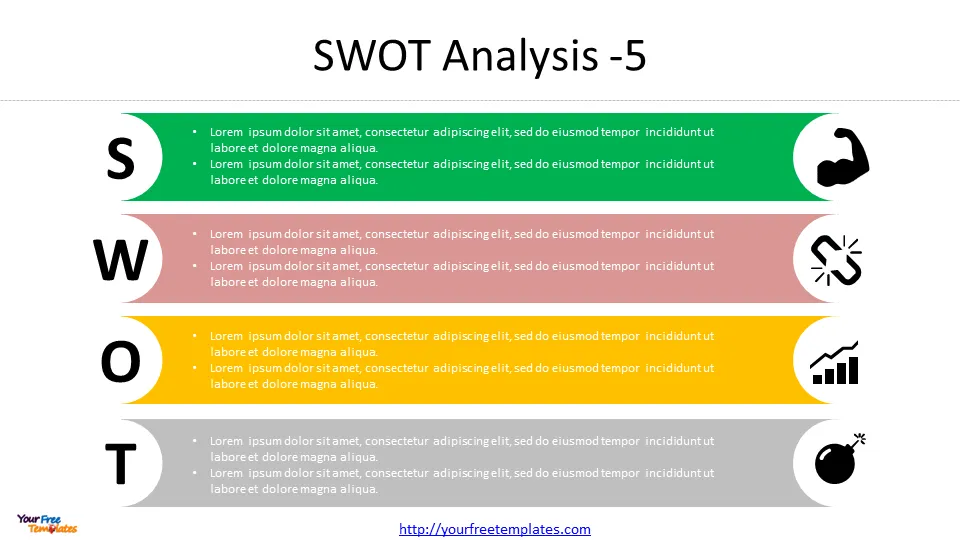
Benefits of SWOT Analysis ( you will enjoy them when developing corporate strategic plan with our free SWOT analysis template)
- Identifies strengths and weaknesses: SWOT analysis helps businesses to identify their unique strengths and weaknesses, allowing them to make strategic decisions to capitalize on their strengths and address their weaknesses.
- Pinpoints opportunities and threats: By analyzing the external environment, SWOT analysis helps businesses identify opportunities and threats they may not have been aware of.
- Facilitates goal-setting: By identifying the key elements of a business’s internal and external environment, SWOT analysis helps businesses to set realistic and achievable goals.
- Improves decision-making: By providing a comprehensive overview of a business’s situation, SWOT analysis helps managers make informed decisions that will positively impact the business.
- Facilitates teamwork and communication: SWOT analysis is often used as a team-building exercise, which helps to improve communication and teamwork within an organization.
- Cost-effective: It is a simple and cost-effective tool used by organizations of any size and industry.
- Easy to understand and implement: SWOT analysis is easy to understand and implement, making it accessible to organizations of all sizes and industries.
- Identifies potential risks: It helps to identify potential risks and how to mitigate them, allowing organizations to take proactive measures to protect their interests.
- Provides a clear picture of the competitive landscape: By analyzing the strengths and weaknesses of competitors, SWOT analysis helps businesses to understand the competitive landscape better and make strategic decisions accordingly.
- Helps to align strategy with the overall business objectives: By identifying the key elements of a business’s internal and external environment, SWOT analysis helps businesses to align their strategy with their overall business objectives and goals.
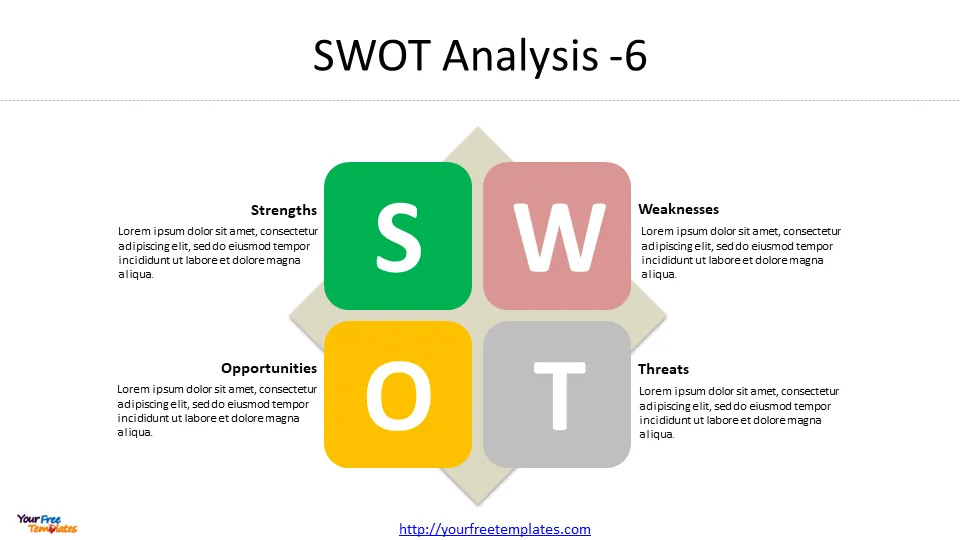
Tips for conducting an effective SWOT analysis
(when you use our free SWOT analysis template for strategic plan)
- Involve a diverse group of stakeholders: A SWOT analysis is more effective when conducted by a diverse group of stakeholders, as they can bring different perspectives and insights to the table.
- Be honest and objective: A SWOT analysis is only useful if it is honest and objective. Avoid being overly optimistic or pessimistic and focus on the facts.
- Please focus on the future: A SWOT analysis is most useful when it is focused on the future. Instead of looking at the past or present, focus on the opportunities and threats that will likely arise.
- Use the SWOT analysis to inform strategy: A SWOT analysis is most useful when it is used to inform strategy. Take the time to develop a strategy that leverages your organization’s strengths, addresses weaknesses, takes advantage of opportunities, and mitigates threats.
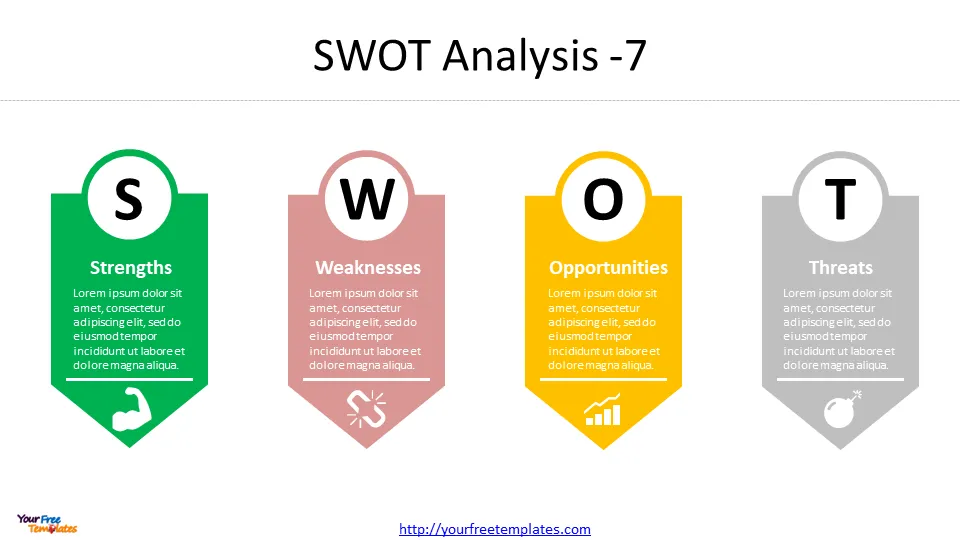
Potential challenges when conducting a SWOT analysis
- Limited data: A SWOT analysis can be challenging if limited data is available. Identifying strengths, weaknesses, opportunities, and threats can make it difficult.
- Bias: A SWOT analysis can be affected by bias, particularly if a single person or group analyzes with a vested interest in the outcome.
- Lack of focus: A SWOT analysis can be ineffective if it lacks focus and direction. The analysis can become unfocused and irrelevant without clear objectives and a defined purpose.
- Overgeneralization: It is easy to fall into the trap of generalizing the data instead of focusing on the business’s specific areas, which can lead to a lack of actionable recommendations.
- Lack of action: A SWOT analysis is only useful if used to inform strategy and action. If the analysis is conducted but not used to inform decision-making, it will likely have an impact.
- Limited scope: A SWOT analysis is only a snapshot of an organization at a specific point in time. The analysis must consider external factors that may change to reflect the organization’s current and future state accurately.
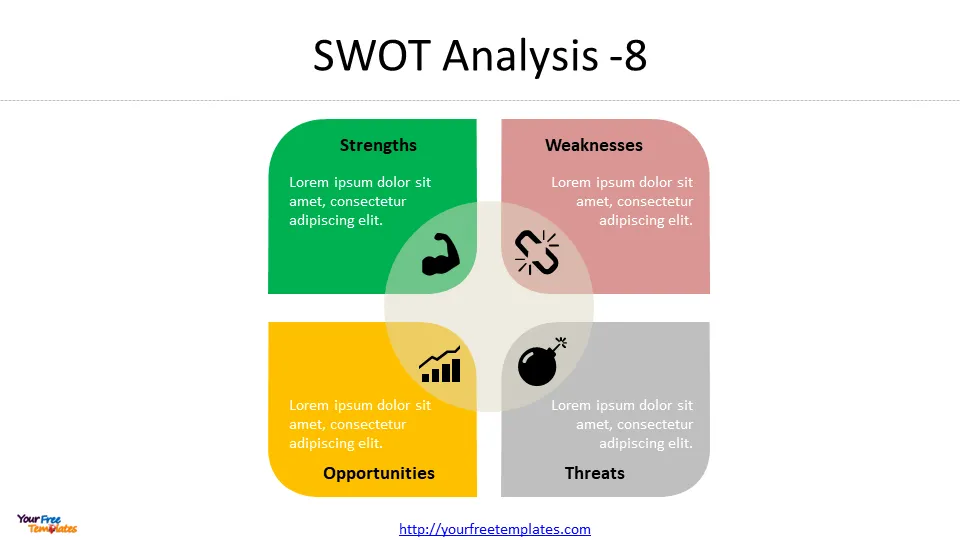
Conclusion
Overall, SWOT analysis is a powerful tool for understanding the internal and external factors that can impact the success of a project or organization. Following the steps outlined above and being mindful of potential challenges, you can conduct a SWOT analysis that provides valuable insights and informs effective strategy.
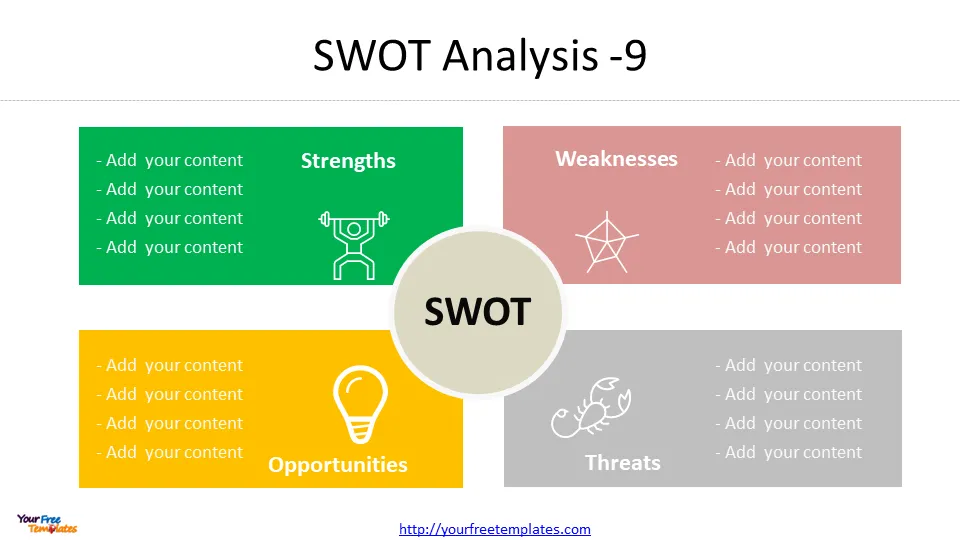
For other interesting maps, pls visit our ofomaps.com
Size:234K
Type: PPTX
[sociallocker]Aspect Ratio: Standard 4:3
Click the blue button to download it.
Download the 4:3 Template
Aspect Ratio: Widescreen 16:9
Click the green button to download it.
Download the 16:9 Template[/sociallocker]








